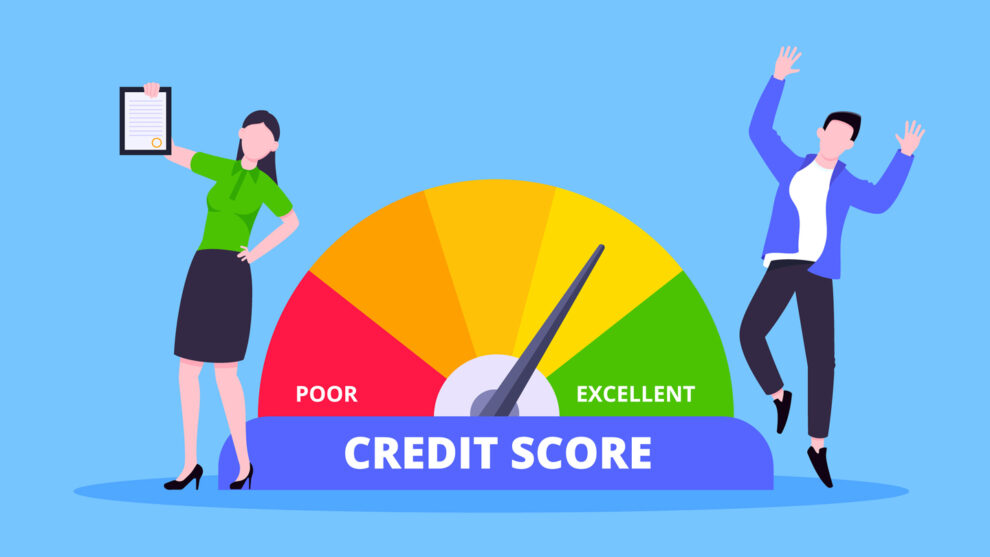Understanding your credit score is the cornerstone of financial health. A high credit score can unlock better loan interest rates, higher credit limits, and housing opportunities. If your credit score is not where you want it to be, don’t fret. With a strategic approach, you can make significant improvements in just six months. Here’s a detailed guide on how to understand and improve your credit score effectively.
- What is a Credit Score?
- Step-by-Step Guide to Improving Your Credit Score
- Additional Tips for Sustained Improvement
What is a Credit Score?
A credit score is a numerical representation of your creditworthiness based on your credit history. It typically ranges from 300 to 850, with higher scores indicating better credit health. Lenders use credit scores to assess the risk of lending you money or providing you with credit. The higher your score, the more likely you will be approved for loans and credit cards at favourable terms.
Factors Affecting Your Credit Score
- Payment History (35%): Timely payments on your credit accounts.
- Credit Utilization (30%): This is a crucial factor in your credit score. It’s the amount of available credit you use, and keeping it low can significantly boost your score.
- Length of Credit History (15%): How long your credit accounts have been open.
- Credit Mix (10%): Variety of credit accounts (credit cards, mortgages, loans).
- New Credit Inquiries (10%): Frequency of recent credit inquiries.
Step-by-Step Guide to Improving Your Credit Score
Month 1: Understand Your Current Credit Situation
Check Your Credit Report
Start by obtaining your credit report from the three major credit bureaus: Experian, TransUnion, and Equifax. You are entitled to one free report from each bureau annually through AnnualCreditReport.com.

Review for Errors
Carefully review your credit report for any errors or inaccuracies. Common errors include:
- Incorrect personal information
- Accounts that don’t belong to you
- Incorrect account status
- Duplicate accounts
If you find any errors, don’t panic. You can dispute them with the credit bureau to have them corrected, bringing you one step closer to your financial goals and giving you peace of mind.
Note Your Score
Please note your current credit score. This will be your baseline for measuring improvement over the next six months.
Month 2: Create a Plan and Budget
Set Clear Goals
Determine what credit score you aim to achieve in six months. Setting a specific goal will help you stay motivated and focused.
Develop a Budget
Create a monthly budget to manage your finances effectively. Include all sources of income and categorize your expenses. Allocate a portion of your budget towards paying down debt.
Prioritize Debt Repayment
Focus on paying off high-interest debts first. This will save you money in the long run and improve your credit utilization ratio.
Month 3: Pay Bills on Time
Automate Payments
Set up automatic payments for all your bills to ensure they are paid on time. Late payments can significantly harm your credit score.

Consider Payment Reminders
If you prefer to avoid automating payments, set up payment reminders on your phone or calendar to ensure you get all due dates.
Month 4: Reduce Credit Card Balances
Aim for 30% Utilization or Lower
Credit utilization is the ratio of your credit card balances to your credit limits. Aim to keep your utilization below 30%.

Pay Down High Balances
Focus on paying down credit card balances, starting with the cards with the highest interest rates.

Month 5: Avoid Opening New Credit Accounts
Limit Hard Inquiries
When you apply for new credit, a hard inquiry is made on your credit report. Too many hard inquiries can lower your score.
Be Strategic About New Credit
Only apply for new credit if it’s necessary. Each new account can reduce the average age of your credit history.

Month 6: Monitor Your Progress
Check Your Credit Score Regularly
Use a credit monitoring service to track changes in your credit score. This will help you see the impact of your efforts and stay motivated.

Celebrate Small Wins
Acknowledge and celebrate minor improvements in your credit score. Positive reinforcement will keep you motivated to continue improving your credit health.
Additional Tips for Sustained Improvement
Keep Old Accounts Open
The length of your credit history affects your score. To maintain a longer credit history, keep older accounts open, even if you’re not using them.
Diversify Your Credit Mix
A mix of credit types (credit cards, mortgages, auto loans) can positively impact your credit score. Don’t open new accounts just for diversification; be mindful of maintaining a balanced credit portfolio.
Stay Informed
Stay updated on credit score factors and changes in credit reporting practices. Knowledge is power when it comes to maintaining good credit health.

Dedication and strategic planning can improve your credit score in six months. You can see significant improvements by following these steps—understanding your current credit situation, creating a plan, paying bills on time, reducing credit card balances, avoiding new credit, and monitoring your progress. Remember, good credit health is a marathon, not a sprint. Continue practising good financial habits to maintain and further improve your credit score over time.
Are you ready to take control of your credit score? Start today by checking your credit report and setting clear financial goals. For more tips and personalized financial advice, subscribe to our newsletter and join our community of savvy savers!










Add Comment